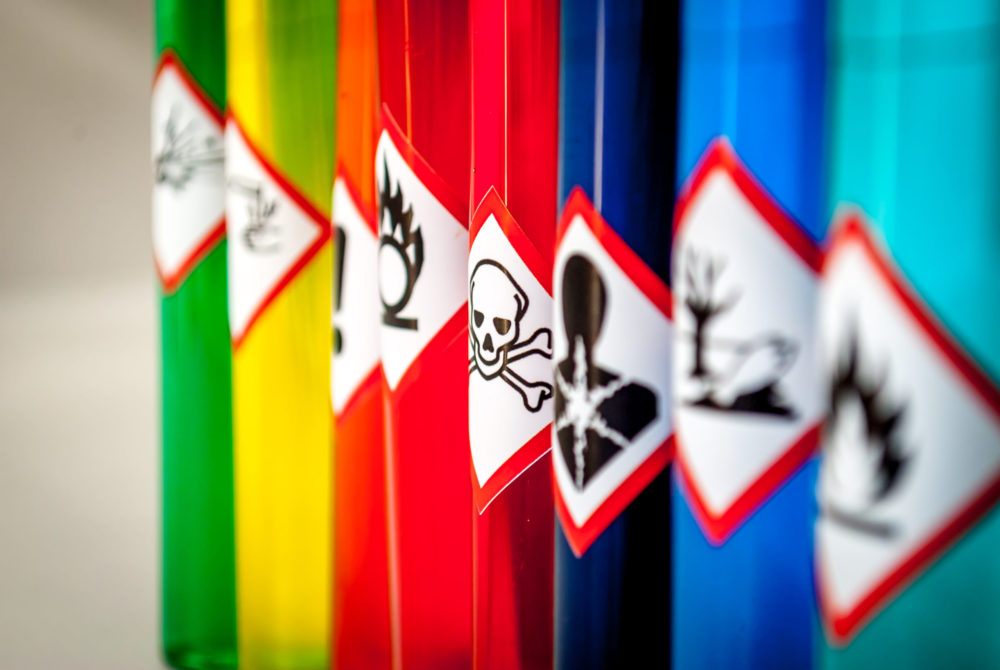EPA To Issue Reporting Requirements for 20 PFAS Compounds Before End of the Year: Report
The EPA hopes these early data collection efforts will work as a guide for prioritizing which of the more than 2,000 PFAS compounds in circulation should be addressed.

Amid continuing concerns about the side effects of chemicals in firefighter foam, plastics and other products, federal regulators are requiring all companies in the United States that manufacturer 20 different compounds of so-called “forever chemicals” to provide information about how they impact human health.
The U.S. Environmental Protection Agency (EPA) will require any company that manufactures the per- and polyfluoroalkyl substances (PFAS) to provide the agency with data on their potential health effects before the end of the year, according to Dr. Michal Ilana Freedhoff, assistant administrator of the EPA’s Office on Chemical Safety and Pollution Prevention.
In mid-October, the EPA announced a Strategic Roadmap designed to address problems with PFAS chemicals, which are used in everything from firefighting foam to furniture. The plan includes new reporting requirements and restrictions, increased research, and accelerated cleanup operations.

Learn More About
Exposure to firefighting foam chemicals may result in an increased risk of cancer for firefighters, military and airport personnel.
Learn More About this Lawsuit SEE IF YOU QUALIFY FOR COMPENSATIONIn June, the U.S. Environmental Protection Agency (EPA) announced that it was proposing the “first-ever” reporting requirements for PFAS chemicals under the Toxic Substances Control Act (TSCA). The rules, if finalized, would require manufacturers to report comprehensive data back to the agency on more than 1,300 PFAS manufactured in the U.S.
The reporting rule would cover all PFAS imported or produced since January 1, 2011; a requirement passed into law by Congress in the 2020 National Defense Authorization Act.
In testimony presented on October 27 to the U.S. House Committee on Energy and Commerce, Freedhoff announced that the EPA plans to issue the first PFAS testing orders to manufacturers later this year, with a priority on PFAS categories for which there is little or no human health effects data. The 20 prioritized PFAS compounds will serve as a beginning guide for which of the more than 2,000 PFAS compounds in circulation should get the EPA’s attention first, based on their threat to human health.
“One of the biggest challenges we face is that most of the hundreds of PFAS that are in commerce have limited or no toxicity data, which means we can’t write a drinking water standard or set a clean-up level, because we can’t characterize the health effects of these substances,” Freedhoff told Congress. “If we continue to work on this one PFAS at a time, we will never be able to fully understand or address the risks from these substances.”
The EPA also plans to develop timelines for setting enforceable drinking water limits for PFAS, a hazardous substances designation, a review of past PFAS rules which may not be protective enough, increased monitoring, data collection and research, a toxicity assessment and efforts to construct a technical foundation for the analysis of PFAS air emissions.
Side Effects of PFAS Chemicals
PFAS were first introduced into the manufacturing industry in the 1940’s, because of their ability to resist heat, grease, stains, and water. However, since then the chemicals have been linked to a myriad of adverse health effects including liver damage, thyroid disease, decreased fertility, high cholesterol, obesity, hormone suppression, and cancer.
The chemical substances are used to manufacture a number of products, including some food packaging materials, pizza boxes, popcorn bags, fabrics, nonstick cooking pans, and other products. However, it is perhaps most known for its use in firefighting through the use of aqueous film-forming foams (AFFFs) used by military and civilian firefighters.
The new EPA regulations also come as several states and lawmakers are pushing to ban, restrict and monitor PFAS. In July, Maine put in place a ban on PFAS which will go into effect by 2030. In addition to Maine, New York set guidelines in January which set limits on allowable concentrations on some PFAS chemicals. Additionally, also in July, two U.S. Senators introduced a bill which would ban the use of PFAS in cosmetics.
Chemical manufacturers now face a growing number of firefighting foam lawsuits brought by nationwide, including individuals diagnosed with with cancer after exposure to the chemicals in their drinking water, as well as firefighters directly exposed during training and response exercises.
Get more articles like this sent directly to your inbox.
"*" indicates required fields






0 Comments